Dutch design studio Shift Architecture Urbanism prides itself on the ability to shift spaces into “something better, smarter, or more beautiful,” Oana Rades told AN Interior. “We are modifiers that create new and unexpected forms of order” on both the urban and the architectural scale. Their latest project, Domus Houthaven, is a 235-unit apartment complex which does just that. Prioritizing efficient, compact, and playful living alongside shared amenities, the project is a response to a growing number of single and two-person households instead of larger, more traditional familial arrangements.
Located on the northwest edge of Amsterdam’s Houthaven, the city’s first port, the residential block is also part of an ongoing redevelopment process which has been advertised as the city’s first climate-neutral district. Future iterations of Domus Living—“a concept by Synchroon, Shift Architecture Urbanism, and …,Staat Creative Agency,” according to its website—will include affordable rentals and carbon-reducing construction methods, Rades noted.
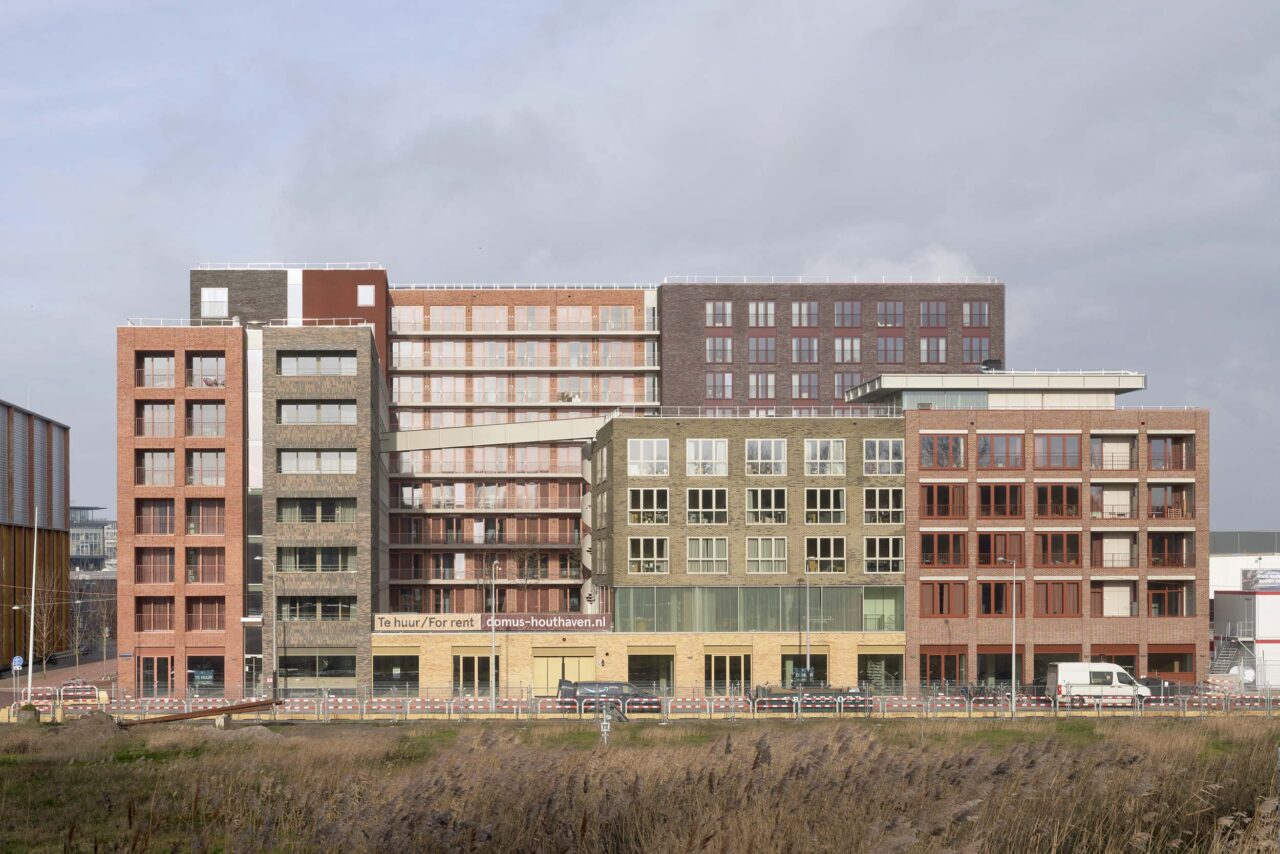
The studio apartments, which range from 462 to just under 700 square feet, were challenging to design. Rades and her team “came up with a new typology for compact living, rather than simply making the traditional flat smaller,” she said. The plan was to compress the secondary spaces and introduce a centralized smart core with “space-saving alcove bed” and colorful kitchen, bathroom, and closet modules with floor-to-ceiling storage.
Material and color were highly considered, with tones loosely based on Le Corbusier’s architectural polychromy palettes from 1931 and 1959. In the apartments, bright melamine cabinetry contrasts with raw finishes like concrete ceilings and perforated steel doors.


The complex, which is designed as a series of interconnected blocks surrounding a shared garden, further encourages interaction among residents inside with a multifunctional coworking/living room, cafe, and rooftop cooking studio designed as “an extension of one’s own private apartment.” Creating opportunities for “informal togetherness” is not only sustainable but prevents loneliness. “For almost every function present in a compact way in the private apartment, there is a generous counterpart in the communal spaces,” Rades said.
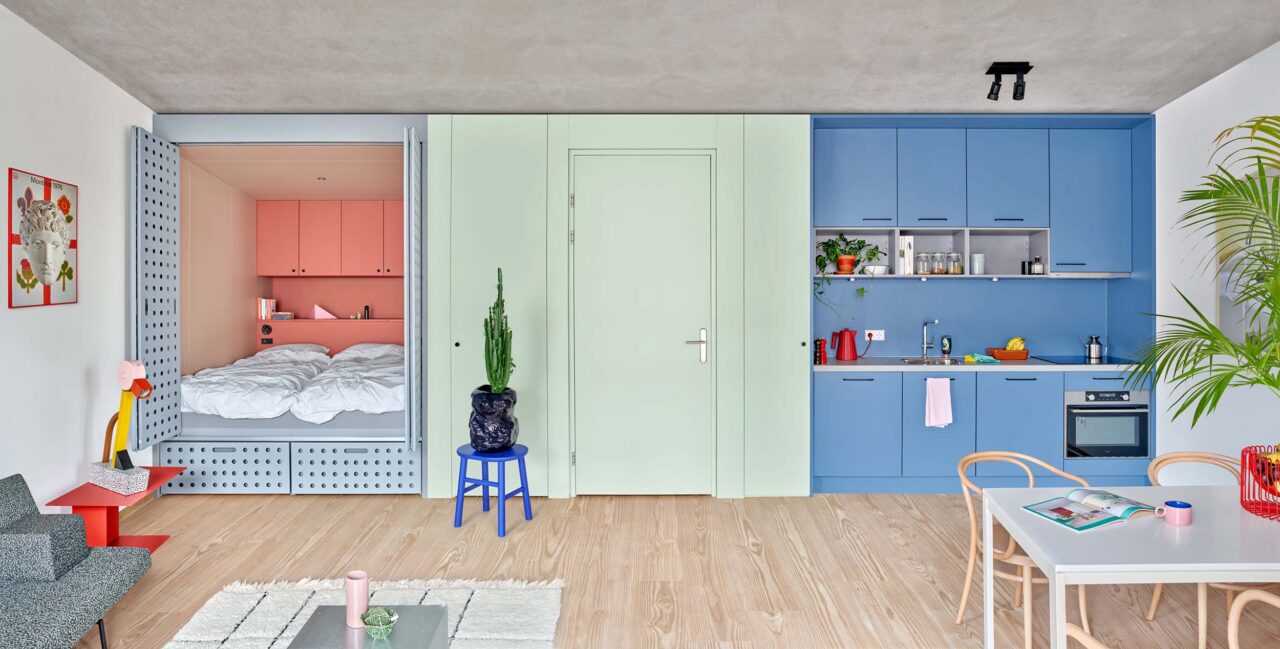
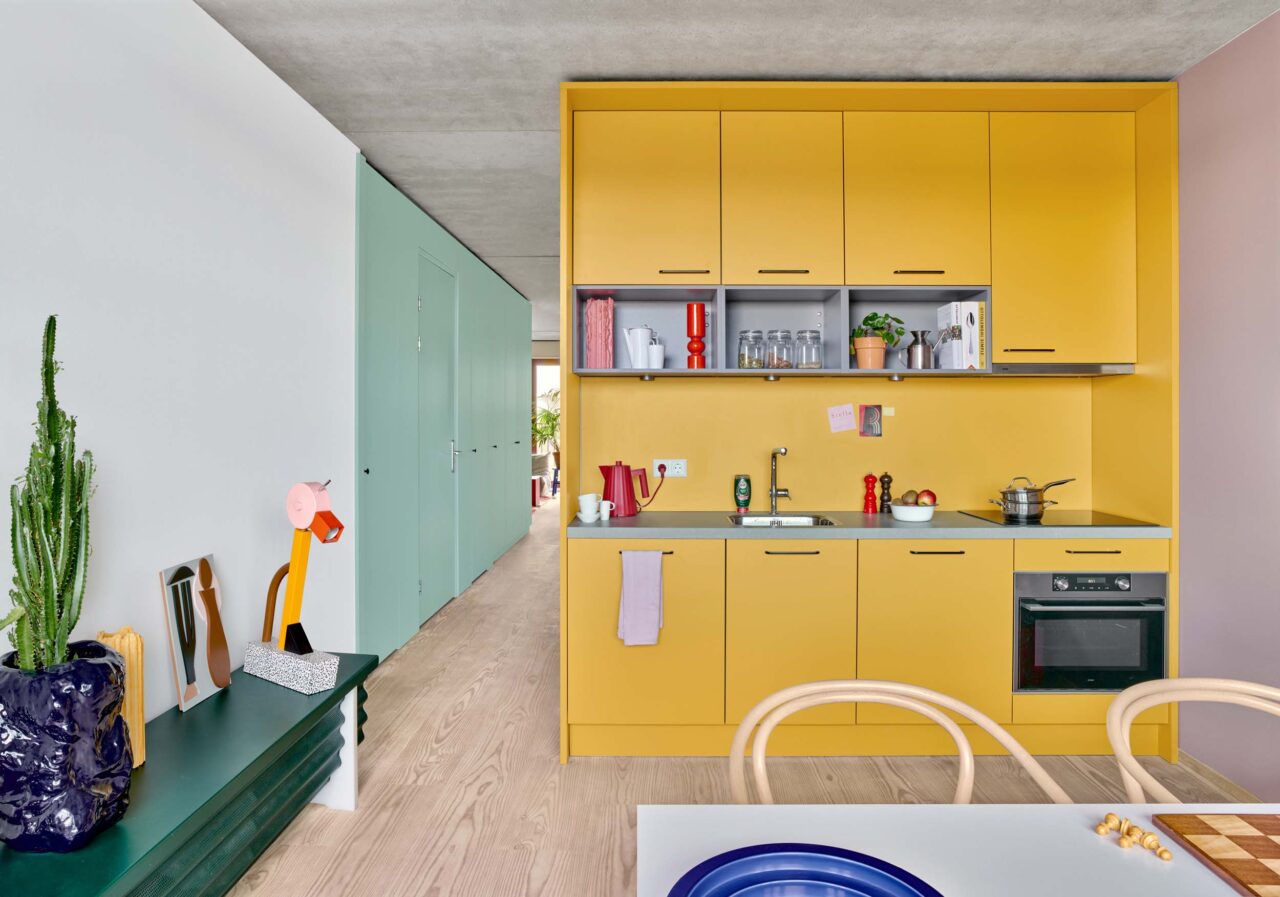
In the common spaces, a range of materials textures from bamboo and wood veneer to ceramic tile and terrazzo bring “strategic differentiation in atmosphere and intimacy within the larger space,” Rades noted. Built-in furniture like wood-lined seating also acts as both a bookcase and a room divider. Color comes into play, too: A small green kitchen with pastel-colored windows nods to the unit’s energetic tones, and additional ledges double as seating.
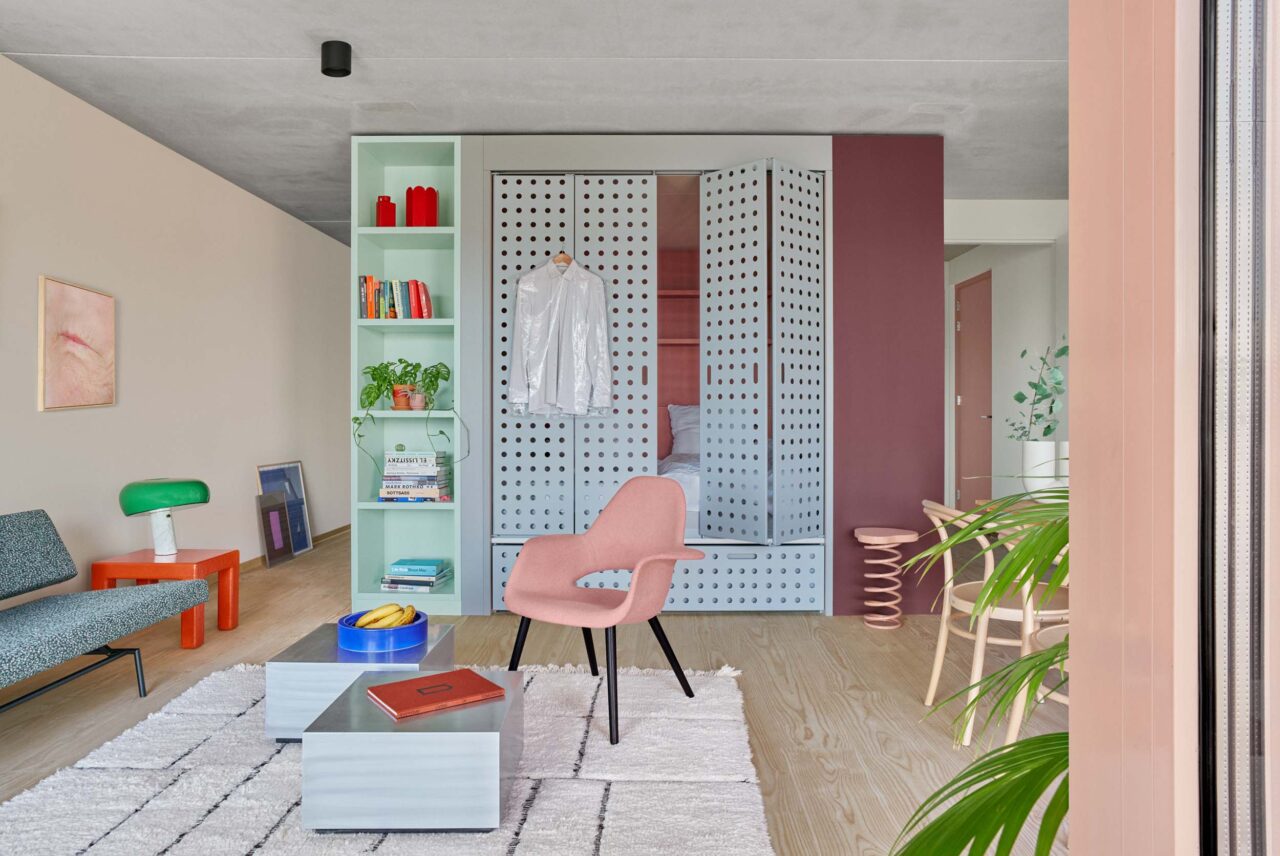
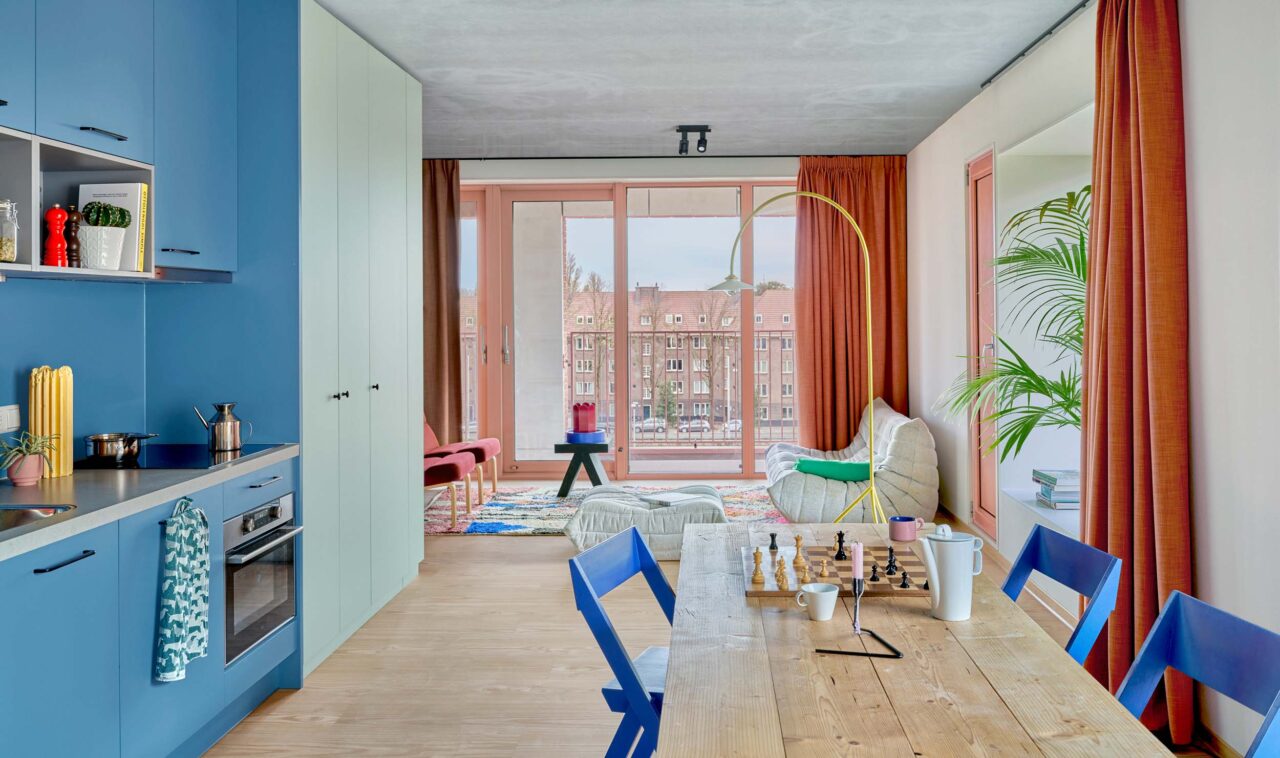
Since this is the first realization of the Domus Living concept, Shift has been open to feedback. “We found out, for instance, that there is a high demand for working places (working from home but not from one’s home) and guest rooms, so the areas allocated to these functions can be larger in the future,” Rades offered. While the continued popularity of remote employment has impacted the need for more work-from-home options, the high-density residential buildings showcase a unique way of living that puts “social contacts and experiences above ownership.”
